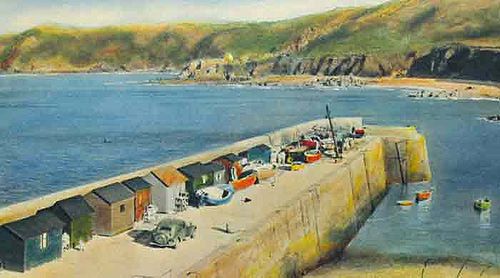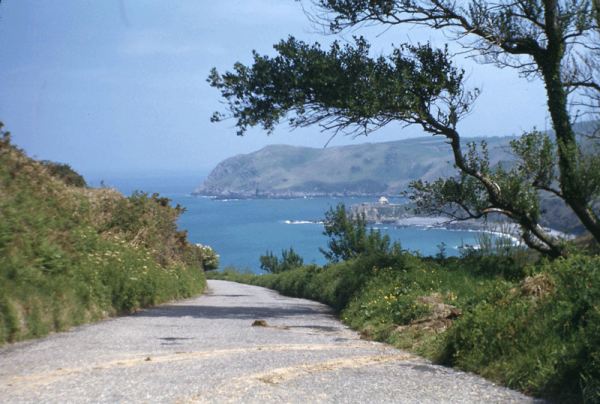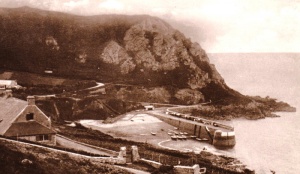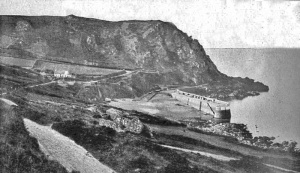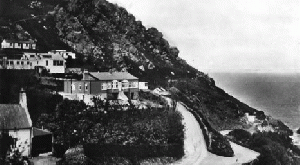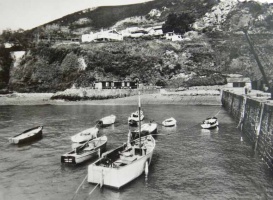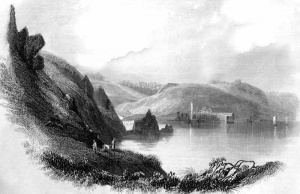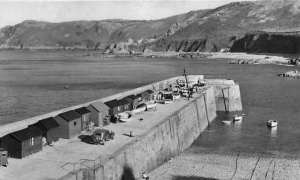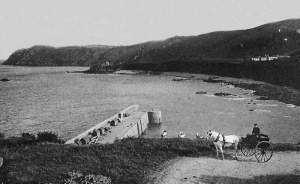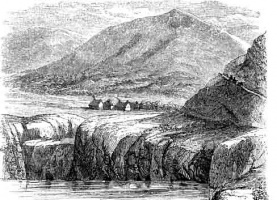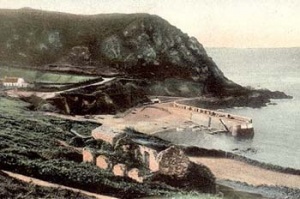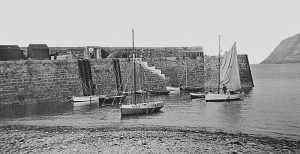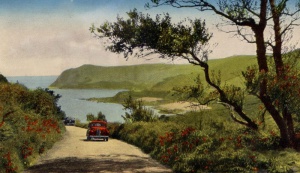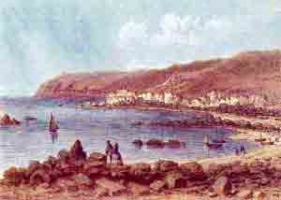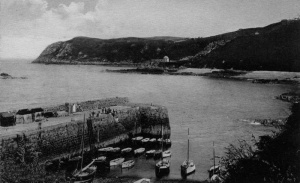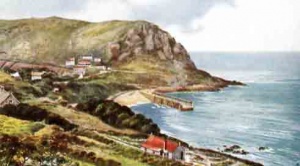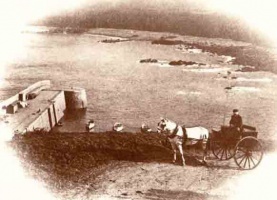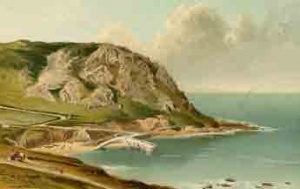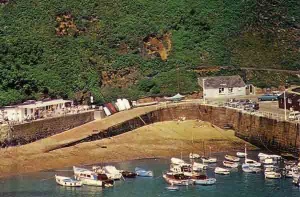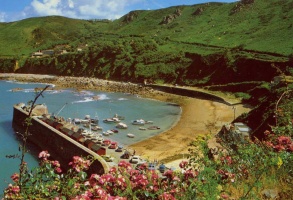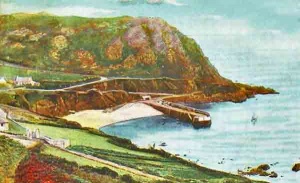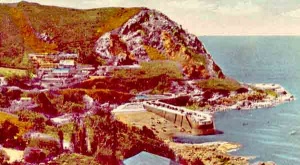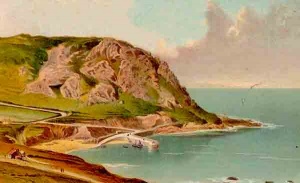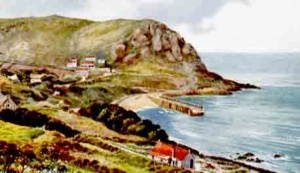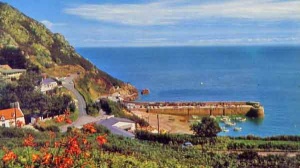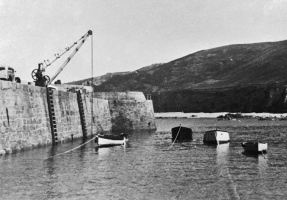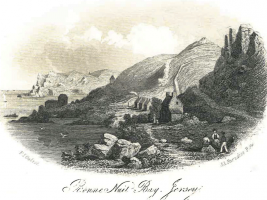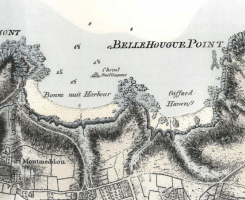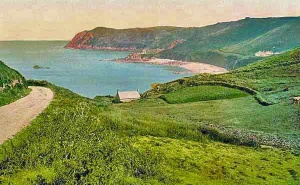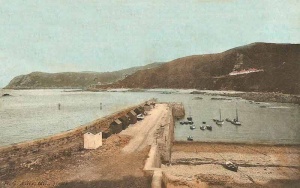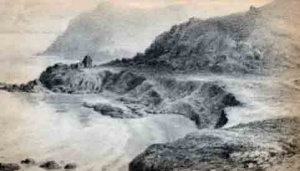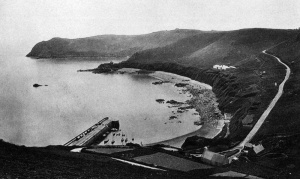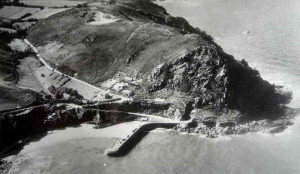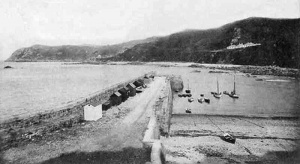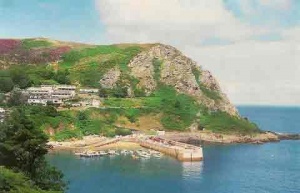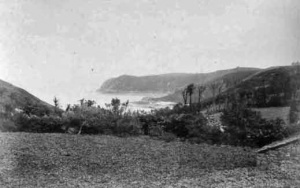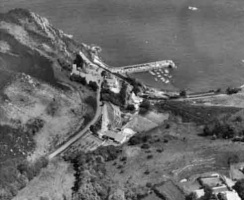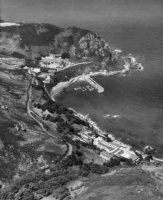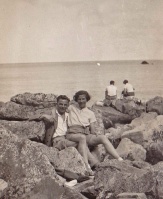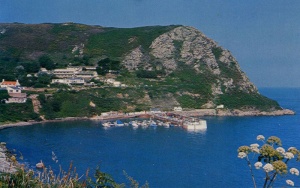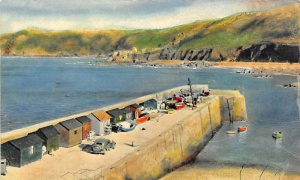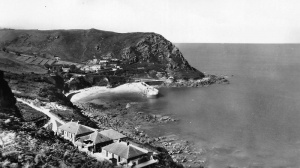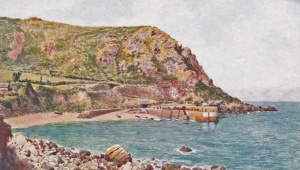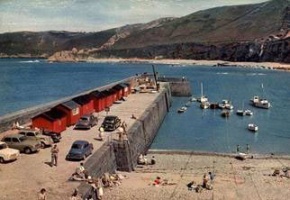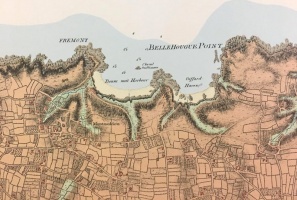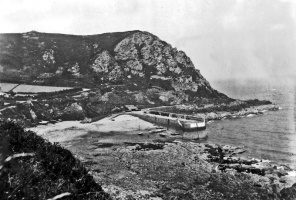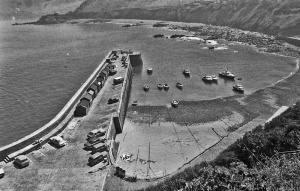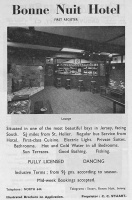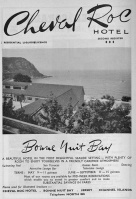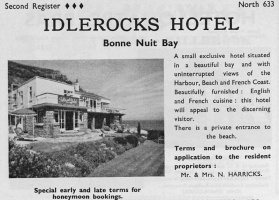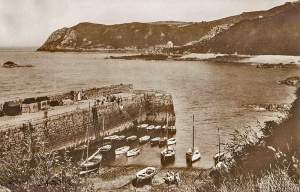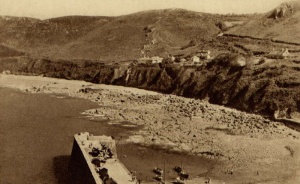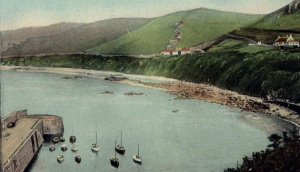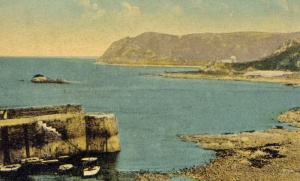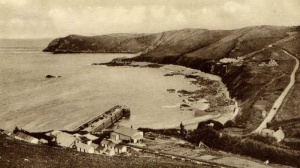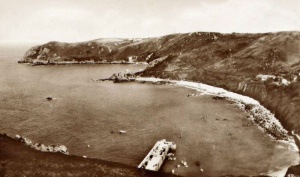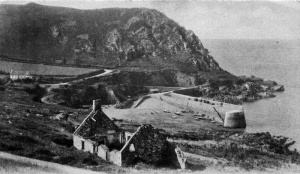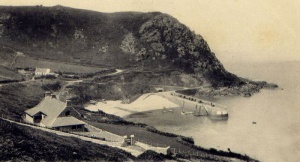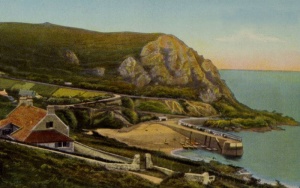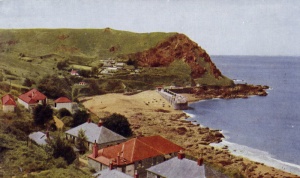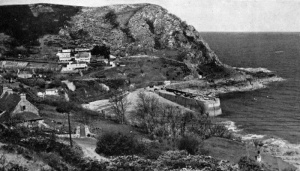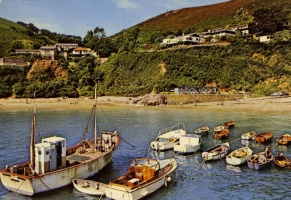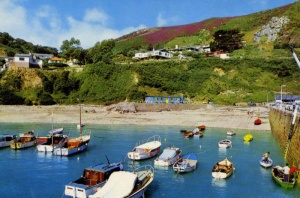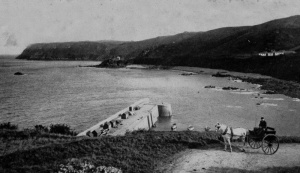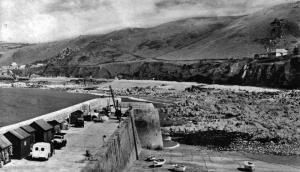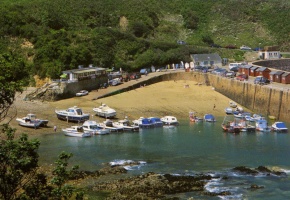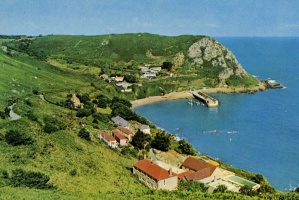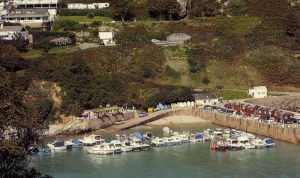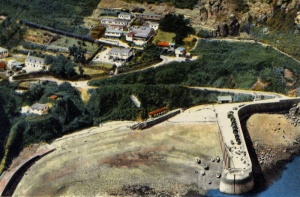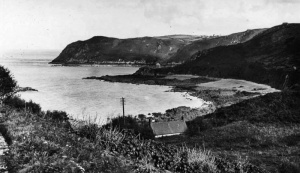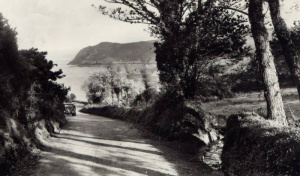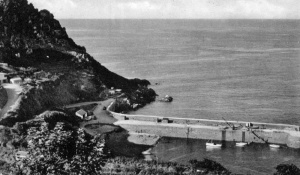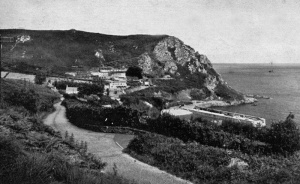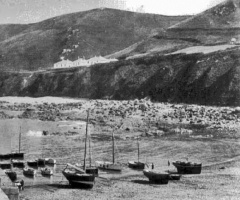On the coast
|
|
Bonne Nuit
Click on Pegman to view the location in Google Street View
|
Bonne Nuit is a picturesque bay in the centre of Jersey's north coast. Its jetty was built in 1872, 44 years later than those at Bouley Bay and Rozel, and at the same time as Greve de Lecq, which is further to the west.
Gift to abbey
It is not known how this bay got its name, which means 'goodnight', but it was already known by that name in 1150 when Guillaume de Vauville gave the Chapel of Ste Marie in the parish of St John to the Abbey of St Sauveur Le Vicomte, and the King, in confirming this gift, used the Latin name de Bono Nocte.
Guillaume's son Richard gave 12 quarters of wheat rente to support the monks in this priory and when selling another field he described it as "alongside the Chapel de Mala Nocte". In three old maps the sea beyond Bonne Nuit is called Maurepos (ill repose).
Every Midsummer Day the prior had to give a dinner to the Bailiff, the Viscount and the King's Receiver. In the Assize Roll of 1309 shows the Dionysius, the then prior, was fined 20 livres for threatening that the Bishop of Coutances would send 80 men-at-arms to seize the judges if the Assize Court tried to stop offenders against Church Law being sent for trial before the Bishop.
In 1413 the Bonne Nuit monks had to return to France because Henry V suppressed all alien priories to stop the flow of English money to France. The priory fell into ruins.
Midsummer tradition
In the middle of the bay is Le Cheval Guillaume a rock around which people from all parts of the island were rowed on Midsummer Day so that they would have good fortune during the next year. Newspaper proprietor Philippe Dumaresq moved to St John in 1792 and tried to turn the old tradition into a major event. He staged a two-day fair like those which were popular in France (for years Jersey people have made the trip across to Normandy for the annual fair at Lessay), with 50 tents selling clothing and food and an open-air livestock market. His fair, which also involved comedians and tightrope walkers from France, a roasted ox and a firework display became so popular that after five years the States closed it down as "contrary to good morals".
Bonne Nuit was thought to be a potential landing place for French attackers. so a boulevard for two cannons was built in 1736, followed by a guardhouse, powder magazine, La Crete Fort and barracks.
The bay had been a popular rendezvous for smugglers for a long time before the jetty was built. The following statement was made by the master of the Eliza in 1836:
- "Instead of proceeding to St Germain, for which we had cleared, we went to Bonne Nuit, and took in 2½ tons of tobacco, spirits in casks, segars and snuff, which I agreed to take to Wales at the rate of £50 per ton. We proceeded to Fishguard, where we arrived on the fifth day, and running in about eleven that evening, assisted in conveying the goods to a store close by. We then went to St Germain, took in 32 sheep, and returned to Jersey."
- A history of Bonne Nuit
- Coast: Bonne Nuit, one of the stops on our coastal tour of Jersey NEW

1880s photograph by Philip Godfray
German Occupation pictures
These pictures of Bonne Nuit during the German Occupation come from an official German army collection. For the full set of pictures of German installations across the whole of the island, follow this link


